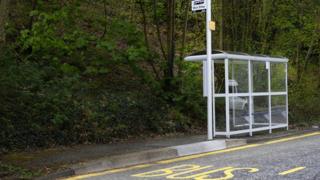Bus travel: Fewer passengers as funding falls
 Image copyright
Getty Images
Image copyright
Getty Images
Disruptions on England's rail network have been in the spotlight over the past year - but only 20% of all trips on public transport are on trains, although passenger numbers have been rising.
Buses are the most common mode of public transport, accounting for 60% of all trips - but on the buses, passenger numbers are falling.
There were 9% fewer journeys on local bus services in Britain in the first three months of this financial year than in the same period a decade ago.
The Campaign for Better Transport says this is partly down to cuts to the amount local authorities England and Wales are spending on buses.
In the past seven years, council spending on buses has fallen by 45%, according to figures released to the campaign group under the Freedom of Information law.
Outside London, buses are largely run by private companies, which make their money from passenger fares. Then, local councils pay subsidies to plug the gaps, often in rural areas where running a route is more expensive or less lucrative for companies.
Areas where running a bus service is the least lucrative for private operators will rely most on council subsidy - and so be most effected by the cuts.
In 2017-18, there were 11 councils in England that spent nothing at all on running bus services.
This has meant 3,000 routes being reduced or scrapped since 2010-11.
There are significant differences in fares, too.
Between September 2017 and September 2018 in London, fares rose by 0.4% - in the capital, buses are still public and regulated.
In other metropolitan areas in England where fares are left to the free market, there was an average 2.4% increase, while in non-metropolitan areas fares rose by 7.9%.
But if bus cuts and fare rises leave some people unable to get around, don't councils have a duty to do something about it?
In fact, councils have very few specific obligations around buses, making them an easy target for councils as the cuts bite.
There are specific things they legally have to do, for example provide transport for children otherwise unable to get to school.
They also have to make sure there are concessionary fares for older and disabled people. Although this is partly funded by central government, the grant has been falling, leaving councils to make up the difference.
But other than that, they are not obliged to fund buses and ensure everyone has access to them.
It's possible a council could be challenged in the courts under equality legislation if it could be shown to be disproportionately restricting certain groups of people.
But legal guidance suggests it would be difficult to challenge a council if it could show it had assessed the needs of a local area and the impact of removing a bus service, particularly on elderly and disabled people.
If after this assessment, councils decide they need to make cuts because of a lack of funds, this would be likely to be legal.
But councils can't let bus cuts leave a community that needs transport with no transport service at all.
And in some areas, councils have used community transport services - often minibuses driven by volunteers - to fill the gaps.
There could be other reasons for the fall in passenger numbers, though.
For the past couple of years, passenger numbers have also been falling in London, despite its relative protection from cuts.
Mayor Sadiq Khan has suggested this could be driven by fewer people going out, as Netflix and Deliveroo make staying at home easier and more tempting.
What do you want BBC Reality Check to investigate? Get in touch